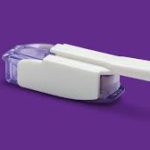Foods contain nutrients that are needed by your body for good health. The nutrients that contribute calories are carbohydrates, protein, and fat. Carbohydrates, by far, have the greatest short-term impact on your blood sugar levels more than protein or fat. Protein and fat takes several hours (up to three to four hours) to show up as blood sugar, so they play a very minor role in short-term blood sugar control.
Type 1 Diabetes and carb counting
For people with Type 1 Diabetes, carbohydrate counting is absolutely the key to maintaining tight control over your blood sugar levels. You count the carbohydrates in a meal you are about to eat and then adjust the amount of short-acting or rapid- acting insulin you inject or the bolus on your insulin pump to balance out those carbohydrates as exactly as you can. By doing this, you are trying to mimic the functioning of a healthy pancreas and release just the right amount of insulin to cover the carbohydrates you eat. With the right balance of carbohydrates and insulin, your blood glucose level will usually stay within the targeted range.
Carb counting explained
Just because you’re going to count carbohydrates doesn’t mean you can’t eat them! In fact, if you eat a well-balanced diet, half the calories you eat (50-60 per cent) will come from carbs. Protein provides about 15 to 20 per cent of the total calories while fats provide 30per cent or less.
For e.g., if your daily meal plan contains 1,200 calories, about 600 (or 1/2 of the calories) should be from carbs. One gram of carbohydrate contains 4 calories, so a 1,200-calorie meal plan will include approximately 150 carbohydrate grams (600 ÷ 4).
Too much carbohydrate in one meal can make your blood sugar stay high for too long.
Counting carbohydrates is one of the best and easiest ways to plan your meals and keep a check on your blood glucose levels. It provides an accurate ‘guess’ of how your blood sugar level will rise after a meal or snack. Counting carbs can offer more variety to your meal plan.
Learning to count
You can learn to use carbohydrate counting to choose what and how much to eat. If you take insulin, you can use carbohydrate counting to decide how much insulin to take. One word of caution here is that you need to choose the right types of carbs as meals rich in simple carbs (bad carbs such as sugar, refined foods) and fat can cause your lipid levels to go haywire. This can lead to insulin resistance (obesity) and an increased requirement of insulin, putting you at risk for heart disease and higher blood sugars in the long run. The type and amount of carbs is very important in ensuring that blood glucose and lipid levels are well within the target range.
Within your daily carbohydrate limit, it is recommended to include foods providing good carbs such as unpolished cereals, pulses, sprouts, whole fruits, vegetables, and low-fat dairy products. Make an effort to include fibre rich foods as they aid in better blood glucose control.
What foods contain carbs?
• Grains – Bread, pasta, breakfast cereals, chapattis, rice, rice flakes, noodles, rawa, maida, daliya, oats, sago (sabudana).
• Fruits.
• Pulses – sprouts, dals, soya.
• Vegetables especially roots and tubers like potato, sweet potato, yams (suran), arbi and peas.
• Milk and milk products.
• Sugars.
• Desserts.
How do you count carbs?
The amount of carbohydrate you eat can make a big difference to your blood glucose levels. If you eat more carbohydrate than usual at a meal, your blood glucose level is likely to be higher than usual for up to several hours afterwards.
Carbohydrates are measured in grams and may be referred to in grams or servings.
One carbohydrate serving equals 15 grams of carbohydrate (1 carb serving = 15 grams of carbohydrate). Sugar and foods that are almost pure sugar – a lollipop, candy, jiggery (gur) and honey – are easy to figure out. 15 grams of table sugar is 15 grams of carbohydrate – as simple as that.
You can check the serving sizes with measuring cups, spoons or a food scale. Measuring food may seem difficult or annoying in the beginning, but it is very important. Once you do this exercise, you will be able to tell the carbs in the food without batting an eyelid.
For packaged foods, the easiest way is to read the nutrition facts section on the package. Just check the label on almost any food that comes in a can, box, packet or a wrapper and it will give you the total carbohydrate count.
Note: Carbs listed are not for the whole package, but just for one serving – and servings are often smaller than you would expect! Be sure to check the serving size. If you’re eating two servings, double the carb count.
Ideal carb servings for a meal
The amount of carbohydrate will vary based on the needs of each individual. The recommended number of servings is basedon your weight, activity level, Diabetes medications,typeofinsulinandthegoals setforyourbloodglucoselevels.Formany people having 45-60 g of carbohydrate foods at each meal and having 15-30 g for snacks works well.
For children and adolescents it could be slightly different. Younger school-age children will consume 30-60 g of carbohydrate per meal, and older children and adolescents may consume up to 60-90 g of carbohydrate per meal. Older children who are more physically active will require more carbohydrate amounts than younger or less active children. Most children also consume 15-30 g of carbohydrate as between-meal snacks.
Insulin and carb counting
Depending on the type of insulin you are on, mid meal snacks and bedtime milk may or may not be necessary. If you are on a fixed dose of insulin, you will need to keep the prescribed amount of carbohydrate intake more consistent at meals and snacks from day to day.
How much insulin you need to balance out a given amount of carbohydrate is determined by your carbohydrate to insulin ratio. For those on multiple dose insulin therapy or taking rapid acting or short acting insulin before meals can use the insulin to carb ratio to match your insulin dosage to the amount of carbs you eat.
This provides a great deal of flexibility to meal planning while helping you to maintain your blood sugars in the optimal range.
Your Diabetes healthcare team can help you determine your own individual carbohydrate to insulin ratio. Checking your blood sugar regularly and keeping careful records of your food intake, blood sugar levels and insulin doses will help you fine- tune it.
The 450/500 Rule
By dividing 450 or 500 by the average number of units of insulin you take daily (total daily dose which is a sum of rapid or short acting/bolus insulin and long acting/basal insulin), you can get a reasonable approximation of your insulin (I): Carb (C) ratio.
For people on rapid acting insulin we use the 500 rule:
For example, If you take 5 units of rapid acting insulin three times a day (15 units) and 10 units of long acting insulin once a day, the total daily dose (TDD) is 25 units. 500/TDD that is 500/25 = 20
Insulin: Carb ratio = 1:20, means each unit will cover 20 g of carbs
For people on regular/ short acting
insulin we use the 450 rule:
Divide 450 by the total daily dose of insulin to get an estimate of the grams of carbohydrate that are approximately covered by 1 unit of insulin.
For example, if TDD is 25 Units/day that is 450/25 = 18
Insulin: Carb ratio= 1:18 means each unit will cover 18 g of carbs Application of Insulin to Carb ratio
For adults
If your breakfast constitutes of 2 idlis (total 30 g) and 1 medium katori sambar (15 g) and an apple (15 g) then the total calorie intake is 60 g. Then the insulin required to cover 60 g is 60/20 = 3 Units (rapid) or 60/18 = 3.3 U (regular).
For children
For very young children (less than 5 years), the 500 rule may not be applicable. They may sometimes need more doses of insulin in which case, the 300-350 rule may be applicable. In practice, the detailed records of self-monitored blood glucose (SMBG results), carb intake and insulin doses provide useful information for making ratio adjustments.
To conclude
Take help from a certified Diabetes educator or a registered dietician to chart out a meal plan that spells out how many carbohydrates you should eat at breakfast, for a mid-morning snack, at lunch, in the mid-afternoon, at dinner and before bed.
Ms Sheryl Salis is a registered Dietician, certified Diabetes Educator and certified Pump Trainer,
NurtureHealthSolutions















